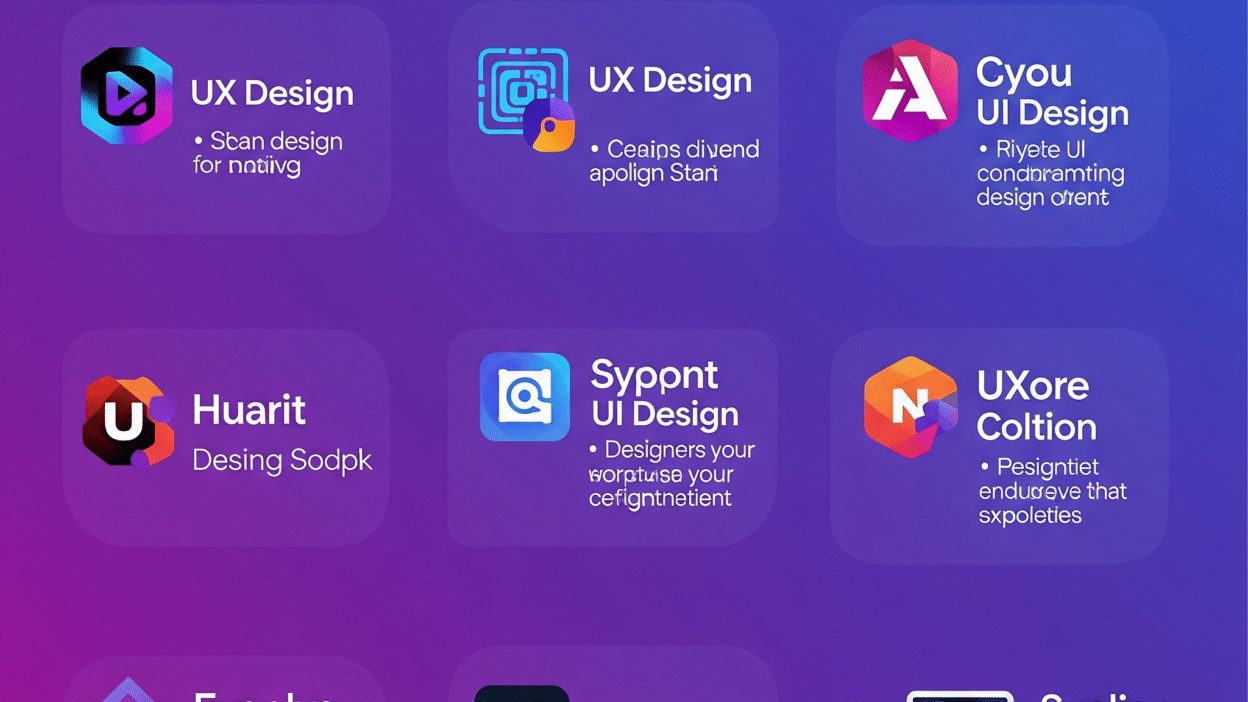In a world driven by digital interactions, users expect everything to work intuitively — whether it’s ordering food, booking a cab, or exploring a new app. But behind every seamless experience lies a deep layer of design powered by technology. Today, with the rise of artificial intelligence (AI), the way we design digital experiences is undergoing a major transformation.
At the center of this evolution is UX and UI design software — no longer just tools for making screens look beautiful, but intelligent systems that understand users, predict behavior, and optimize designs in real-time. The AI era has redefined what it means to design.
Why UX and UI Design Software Matters More Than Ever
Design isn’t just decoration — it’s strategy. It’s how products think, respond, and interact with people. UX (User Experience) focuses on how something works. UI (User Interface) focuses on how it looks and feels. Together, they shape everything we use on screens today.
UX and UI design software allows designers to bring these experiences to life. But now, with AI, these tools are becoming more predictive, responsive, and human-aware.
Modern design isn’t made in isolation. It’s powered by real-time data, user testing, machine learning, and automation — all embedded into the design tools themselves.
AI Is Redefining the Design Process
We’re no longer designing in a vacuum. AI-enhanced tools are helping designers make smarter decisions, faster. Here’s how:
● From Creativity to Co-Creation
Tools like Figma and Adobe XD now suggest layouts, color palettes, or UX flows based on user behavior and design trends. AI becomes a creative partner, not just a processor.
● Real-Time User Insights
UX and UI design software powered by AI can predict friction points in a user journey before it even goes live. Designers now get instant feedback without waiting weeks for user testing.
● Hyper-Personalization
AI allows interfaces to adapt based on location, preferences, or even mood. Think Spotify’s personalized playlists or Netflix’s custom thumbnails. The design is no longer static — it evolves with the user.
Why Students Should Care
This shift isn’t just for experienced designers. It’s a call to the next generation of creatives, developers, and thinkers. Design is becoming one of the most influential skills of the AI era — and it’s deeply interdisciplinary.
Whether you come from a tech background or the arts, understanding how to use UX and UI design software gives you the power to shape how the world interacts with technology.
If you’re a student looking to enter the design space, now is the time to start learning tools that integrate AI. Enrolling in quality UI UX training will help you grasp not only the technical side of tools, but also the human-centered thinking that drives meaningful design.
What to Look For in UI UX Training
Forget courses that only teach software shortcuts. In today’s world, effective UI UX training should prepare you for intelligent design systems. That includes:
- Human-centered design approaches
- Research-driven thinking
- Collaborative workflows with AI support
- Ethics in AI and user data
- Exposure to real industry projects
This kind of learning environment is key to developing not just skills, but vision.
Why a UI UX Institute in Delhi Makes Sense
Delhi is fast emerging as a hub for digital design and innovation. Choosing a UI UX institute in Delhi puts you at the center of a growing creative and tech ecosystem. Many institutes offer not just classes, but real exposure to tools used by industry professionals, including those enhanced by AI.
In a city known for its diversity, students also benefit from designing for real user needs — from metro navigation apps to healthcare platforms. You learn to design in context, which is one of the most valuable skills in this field.
Design Is Becoming the Language of the Future
We used to think of design as a final step. Now, it’s the starting point of every great product. In the AI era, your ability to design — to shape digital products that feel intuitive and natural — is more valuable than ever.
Let’s break it down:
- Businesses are investing in better user experience because it directly affects profits.
- AI tools help designers test and build faster — and companies love speed.
- Every industry — from education to healthcare — is now hiring UX/UI professionals.
This is not a passing trend. It’s a career path with depth, impact, and constant evolution.
What the Future Looks Like
The next generation of UX and UI design software will likely:
- Design entire flows based on user data
- Auto-test accessibility and usability
- Offer real-time personalization at scale
- Allow voice- or gesture-based interface creation
- Integrate seamlessly with AR, VR, and mixed reality environments
And guess what? These tools will still need designers — people who understand humans, not just machines.
Conclusion: Design with Intelligence
We are moving toward a world where technology doesn’t just respond — it understands. This is the promise of AI in design. But software, no matter how smart, is only as good as the person using it.
If you’re serious about stepping into a future-forward career, learning how to master UX and UI design software is the key. Through hands-on UI UX training or by joining a UI UX institute in Delhi, you can build the skills needed to design not just for screens — but for people.
Because in the AI era, great design isn’t just about creating interfaces. It’s about shaping human experiences. And those who can do that — with intelligence, empathy, and skill — will lead the way.



